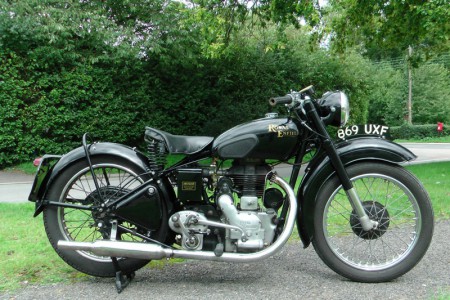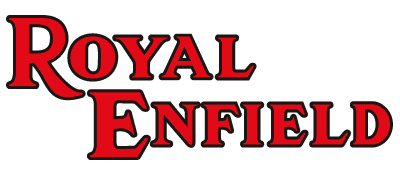Royal Enfield Model G: The Father of the Bullet
Celebrating the Oldies - Part Two
Royal Enfield is the only motorcycle brand to span over three centuries. Its bikes, which, today, are difficult to disassociate with India, were once an integral part of Britain's industry.
If you read our recent story about the
Ariel 4F Square Four 600, then you'll already know that we're embarking on a celebration of the oldest bikes on the Wemoto stock system. Bikes that, are not only stunning in their own right, but which have influenced and shaped the motorcycle industry considerably.
And when it comes to influencing motorcycling, it's near impossible to deny the impact that Royal Enfield has had. And it all started with the Model G...
Made Like a Gun
Royal Enfield was established by Albert Eadie and R.W. Smith when they bought a bicycle business near Redditch from George Townsend in 1891. It was originally named Eadie Manufacturing Co., but, after receiving a large contract from the Royal Small Arms Factory (Enfield) to manufacture weapons, it became The Enfield Cycle Company, adopting the Royal Enfield brand for the bikes it produced.
By this time, the ECC (Enfield Cycle Company) had manufactured the famous Enfield Rifle; the company's connection to the weapons industry being the inspiration for Royal Enfield's cannon logo and motto 'made like a gun'. The ECC built its first motorcycle in 1901.
Due to the economic depression that followed the First World War, the company traded at a loss, managing to rely on reserves to keep afloat. Eadie died in 1930, shortly followed by his partner Smith in 1933, and a new Managing Director, Major Frank Smith took over.
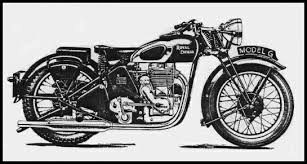
1940
The 'Father' is Born
Although the Bullet was first introduced in 1932, the
Model G, which came a few years later, was arguably much more akin to the Bullets that were produced post-World War Two, and to the Bullets that are still manufactured today.
Interesting Fact: The ECC began using 'saddle' tanks and centre-spring girder forks in 1928, and was one of the first companies to do so.
This 2-valve single-cylinder O.H.V 346cc bike went on sale for £43, which is the equivalent of about £2,800 today; it was aimed at a wide market and was priced as such. Dubbed the 'father' of the modern Bullet, it sported an all-alloy frame, in a shape similar to today's models. Revisions of this bike were released multiple times – in 250, 350 and 500cc - until the start of the Second World War, when, with demand from the government, The Enfield Cycle Company focused more on military models.
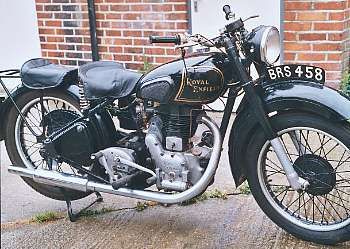
1946
Post-WW2 Model Gs
Production of the Model G single-cylinder O.H.V 350cc continued after the war, in an aim to provide reliable, basic models in a world that was now hungry for transport. It was priced at £93 (about £3,500 today) plus purchase tax.
Interesting Fact: Royal Enfield's 1948 model was the first British production bike to have a rear swing-arm.
A big order for bikes came from the Indian Army in the early 50s, and The ECC decided to open a factory in Madras (now Chennai), originally shipping kits out for construction, before, eventually selling its design to Enfield India, a subsidiary firm. Enfield India began producing bikes in large quantities, and Royal Enfield in Redditch began to struggle with the competition from Asia's growing motorcycle manufacturing economy.
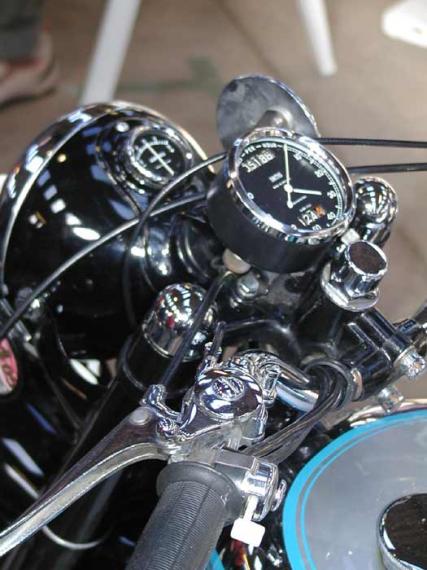
1947
The Redditch plant continued to produce more models for a while, but they were different from those made by Enfield India, who had now begun to market its bikes to other countries. Models made at the Redditch factory were slowly discontinued, the factory was closed and The ECC finally closed down completely in 1970.
Enfield India and the Legacy of the Bullet
Enfield India began to market its bikes to the British market. The company bought the rights of the now defunct British firm and took on the Royal Enfield name. Royal Enfield (India) has continued to produce Bullets up to this day - now importing them all over - making it the longest running production motorcycle in the world.
Royal Enfield Model G Sepcs
Years of Production: 1936 - 1954
Engine: Single-cylinder, O.H.V, fully enclosed valve gear
Capacity: 346cc
Bore & Stroke: 70 x 90mm
Front Suspension: Tubular type with hand controlled shock absorbers and steering damper in earlier models; Royal Enfield's own design of telescopic front forks on later models
Rear Suspension: Swingarm on later models.
Gearbox: 4-speed Albion
Have you owned or ridden a Royal Enfield model G before? Do you have any additional specifications for this bike that we've missed? Let us know your thoughts at
[email protected].
Comments
04/02/16 Thanks for the history guys
05/02/16 Royal Enfield doesn't only bring to mind superb bikes but also aching arms. When I Joined up in 1965 we were still using the Lee Enfield .303 rifles for drill/parades!!
05/02/16 not when I joined up in 63 !
08/02/16 Royal Enfield you have to take your hat off to them, they now have a Harris frame and better suspension and brakes value for money? Yes
08/02/16 Having Guy Martin big them up in India didnt do them any harm either and as you say terriffic value for money , its not every body that wants a sports bike or maybe not capable of riding one
08/02/16 Had a Royal Enfield Super 5:lovely bike!
08/02/16 What a bute machine
08/02/16 shes a looker
08/02/16 Half of the Bullet is in bits in the garage, the other half in the house being fettled. Soon it'll be built up in the living room
